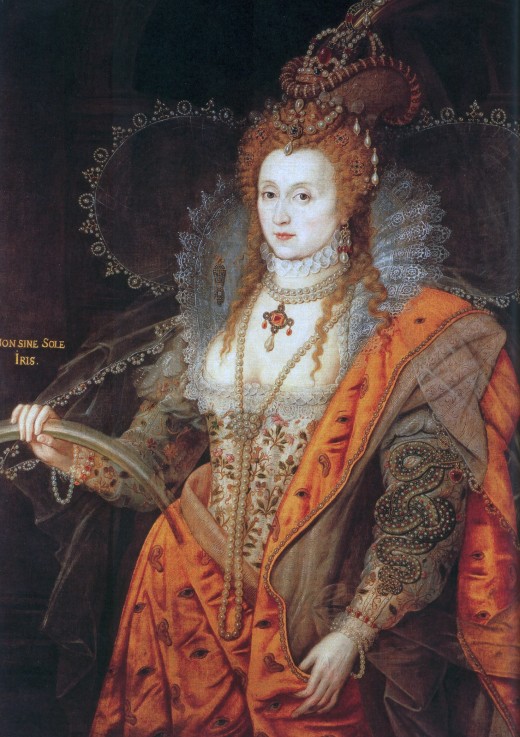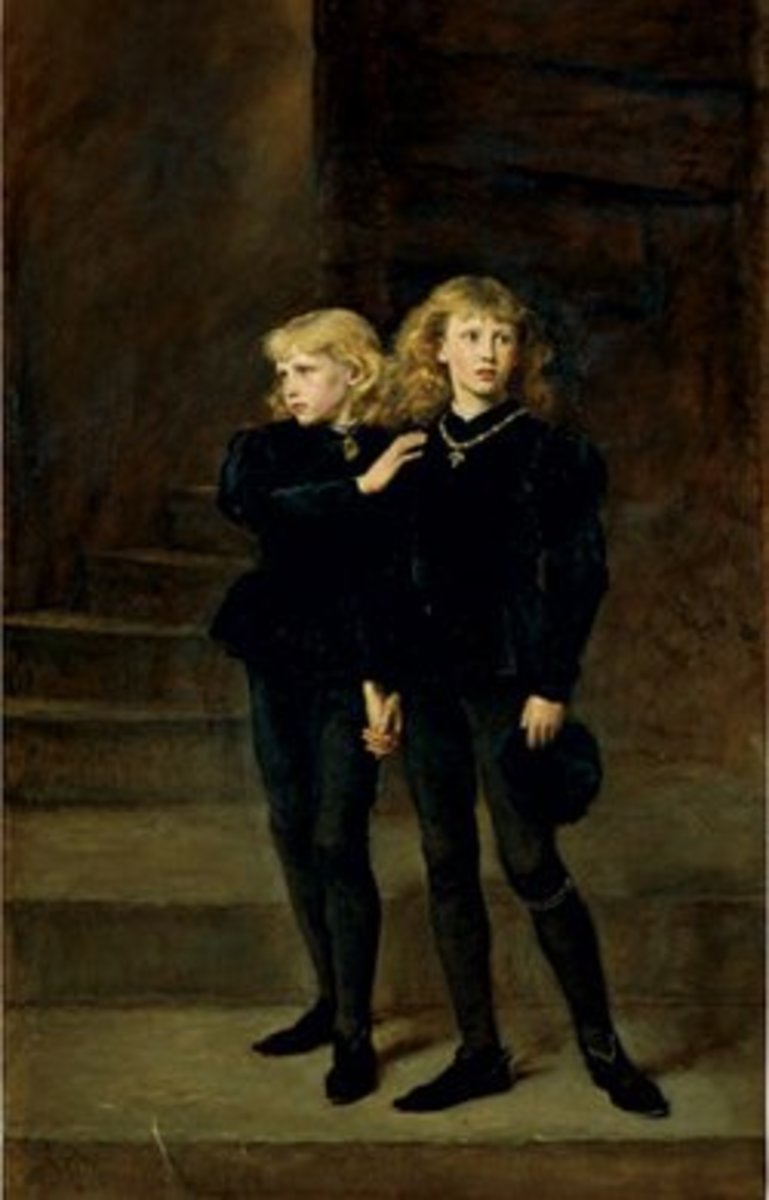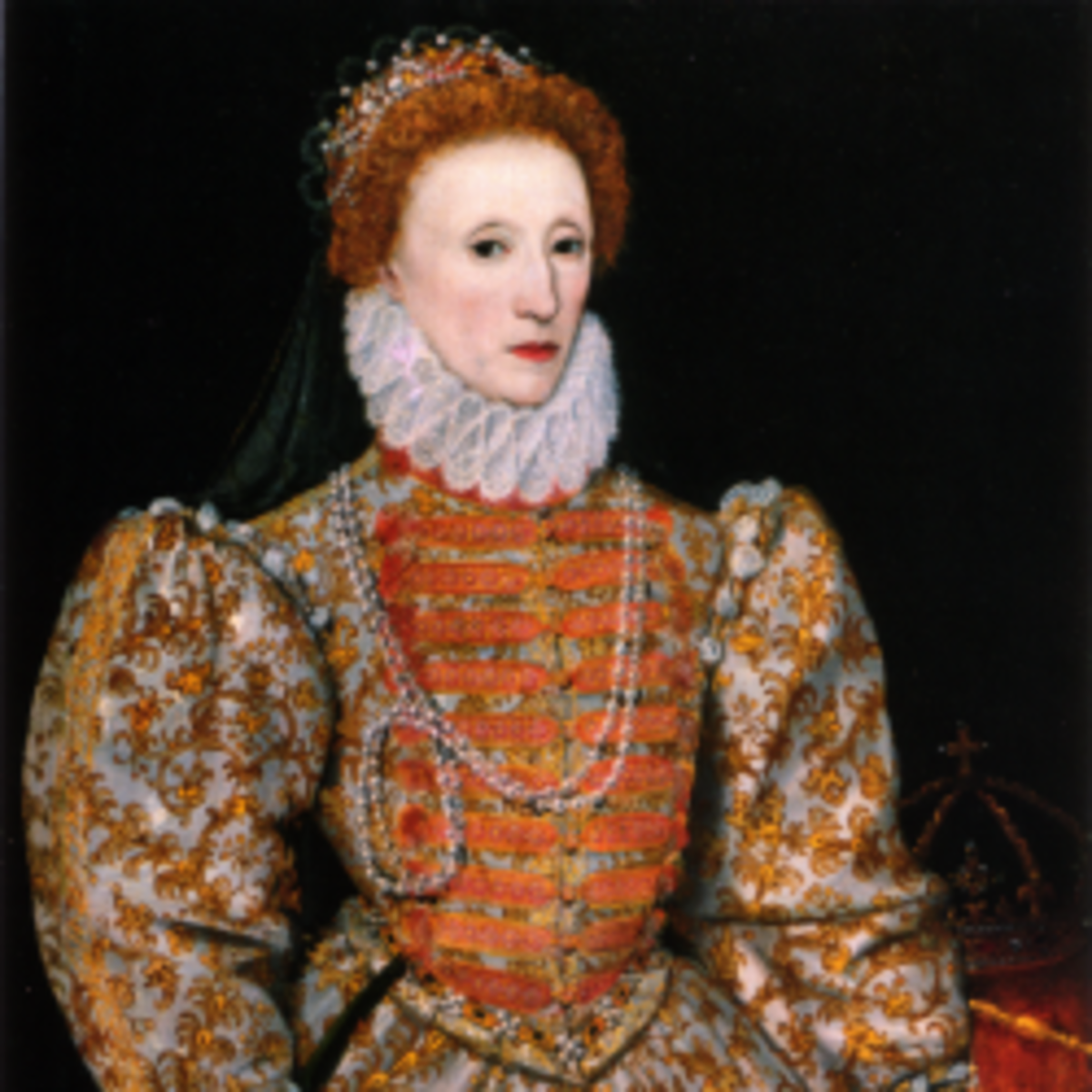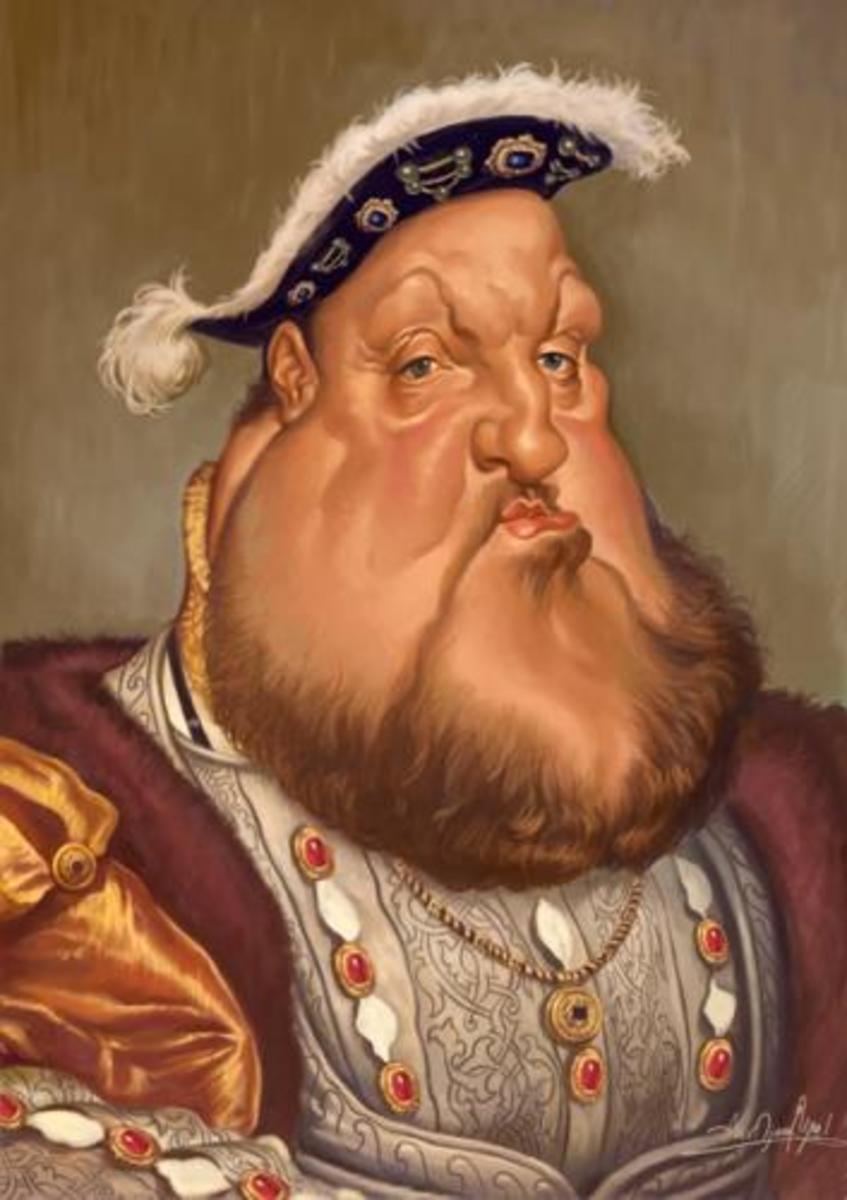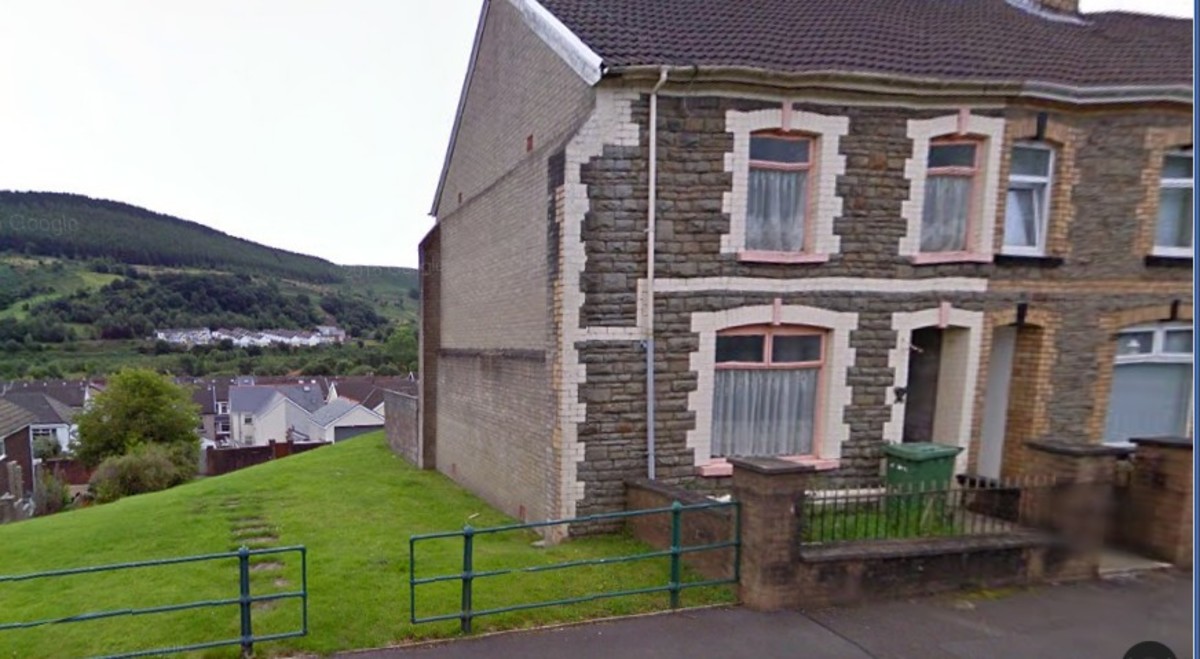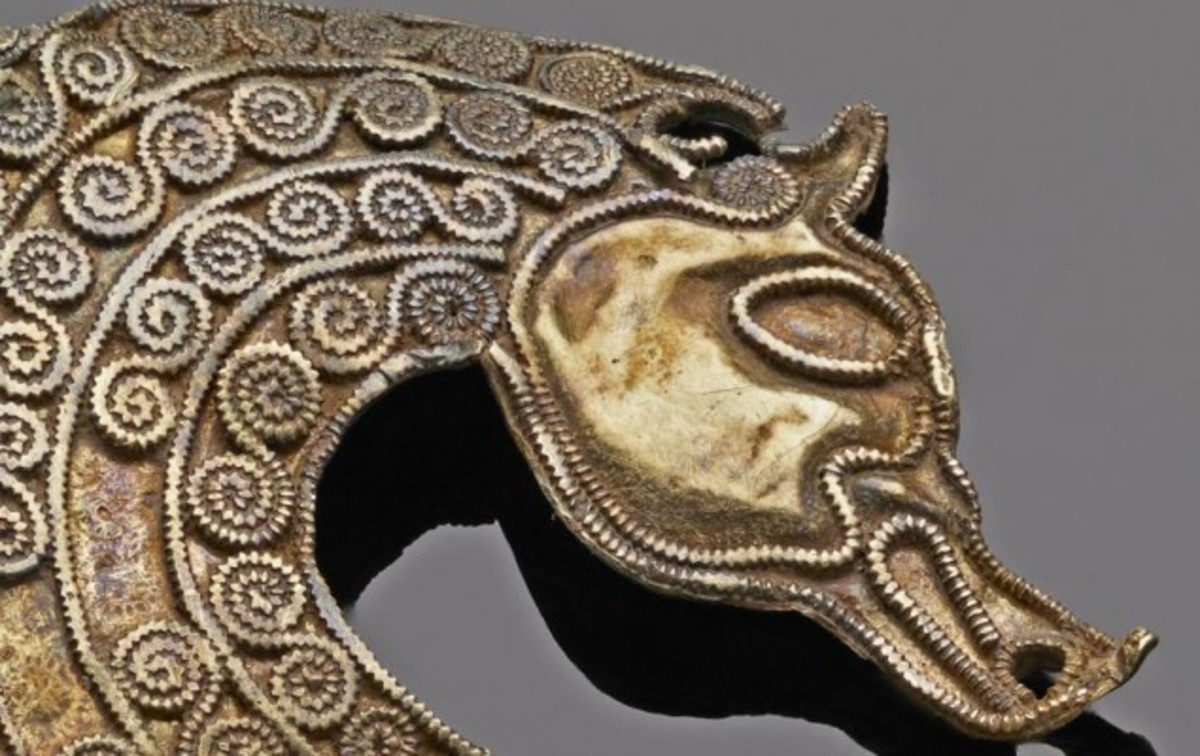- HubPages»
- Education and Science»
- History & Archaeology»
- History of Europe
Heart of a King: Elizabeth I
Elizabeth I
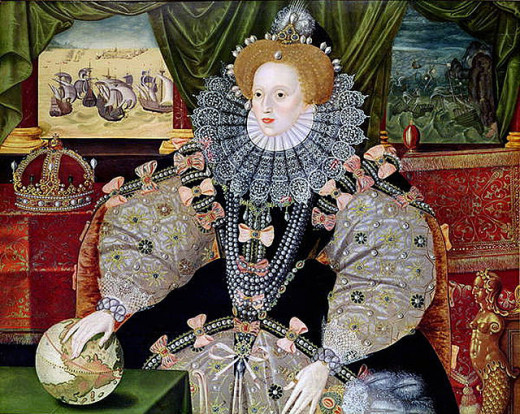
From Motherless Child to the Queen of England
Heart of a King: Elizabeth I
It never should have happened. She was the second eldest child in her family, but the third in line to the throne, the daughter of a witch, the sister of a vicious dictator, suffering the misfortune of being born a girl when her tyrannical father wanted only sons, living in a time when women were little more than ornate chattel.
And yet, Elizabeth Tudor became queen of the most powerful empire at the time, and is listed as one of the most powerful and influential leaders in history.
Born on September 7, 1533 at the palace in Greenwich, England, Princess Elizabeth entered a troubled world; her father was King Henry VIII, was a man massive in both size, appetite and temper. Henry’s great obsession in life was to obtain a son, a prince that would inherit his throne and become king of England. So consuming was this need for a male heir that Henry had had annulled the marriage to his first wife, Catherine of Aragon (on the grounds that, as she had been married to his brother previously, their current marriage was null and void) in order to marry the queen’s lady in waiting, Elizabeth’s reluctant mother Anne Boleyn.
Anne quickly became pregnant, and when the royal couple consulted astrologers as to the sex of their unborn child, all signs pointed to a son. So thrilled was Henry that he immediately ordered a joust and feast scheduled for the boy’s birth. Imagine Henry’s shock and rage when, after hours of painful labor, Anne gave birth not to a son but to a tiny red-haired daughter instead? Henry was so furious that he canceled the joust, had his new daughter Elizabeth quickly christened and then sent, at just days old, to be raised at the palace in Hatfield in Hertfordshire, with only a governess and tutors for family.
Not long after Elizabeth was born, Anne again became pregnant, this time with the long-sought son that Henry desperately wanted. Unfortunately, the child was stillborn, and Henry began to look for reasons to get out of his marriage with Anne in order to marry Jane Seymour, his third wife. With a little help from Henry’s chief minister Thomas Cromwell, rumors of Anne’s alleged infidelity and dabbling in witchcraft spread throughout England. Now armed with an excuse, Henry ordered the execution of the woman he had defied a pope to marry, citing her a traitor to the crown. Anne Boleyn, the mother of Henry’s surviving child, was beheaded at the Tower of London, almost three years after Elizabeth’s birth. She hardly knew her mother.
Largely forgotten by Henry in the wake of Anne’s execution, Elizabeth grew up apart from her family and in near seclusion. When Henry’s third wife Jane Seymour gave birth to Elizabeth’s half-brother Edward, any hope Elizabeth may have had of ruling England was instantly dissolved. However, Elizabeth’s sixth stepmother, Catherine Parr, persuaded Henry to keep Elizabeth and her older sister Mary in line as successors to the throne. This was more to present the royal family as a solidified unit in order to detract opposition than out of any maternal feelings—a unified family front would prevent attempts to take the crown by force.
By this time Elizabeth likely didn’t care, and devoted herself to her education. Her tutors regularly marveled at her intellect and aptitude for learning, with one tutor citing that “her mind has no womanly weakness” and felt that she was some kind of freak of nature. By her adulthood she could read and speak in several languages (English, French, Italian, Welsh, Spanish, Greek and Latin), and studied varied fields such as philosophy, theology, music, literature, and arithmetic. She became one of the most highly educated women in the world, but also had a bit of an adventurous, wild streak in her, often riding her horse so fast it terrified her guards.
When Elizabeth was thirteen, Henry VIII passed away in 1547, a victim of his own bloated excesses, and at age nine her younger brother Edward VI became king. Henry’s final wife Catherine Parr quickly married Thomas Seymour, the brother of Henry’s third wife Jane, and they took young Elizabeth into their home in Chelsea. Here begins a dark and confusing time for the young princess, as her new stepfather acted inappropriately in a manner that we would view as a precursor to sexual abuse now, often approaching her in his nightgown and engaging in unrelenting tickle fights. Catherine Parr twice joined in on this “horseplay,” but when she caught the pair embracing she sent Elizabeth away from the household. After Catherine died, Thomas Seymour began a courtship of Elizabeth, but his own brother, the Lord Protector Edward Seymour, saw this as Thomas’s attempt to control their nephew, King Edward VI, and had Thomas executed for treason.
Elizabeth, Age 13
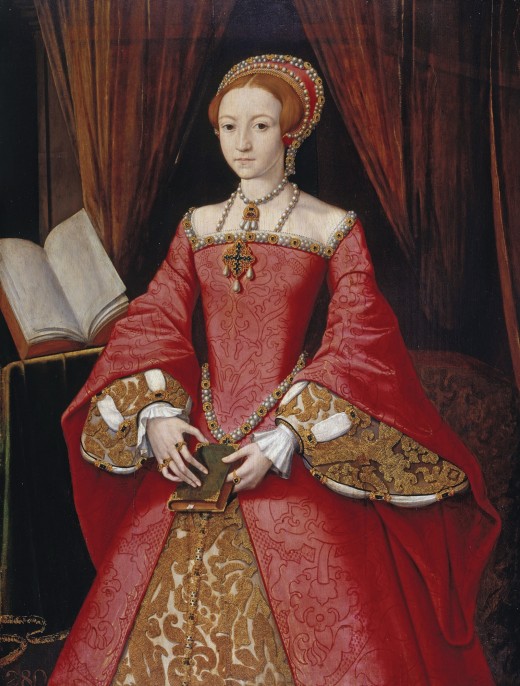
In the summer of 1558, fifteen year old King Edward died. His will declared that neither one of his older sisters would inherit the throne, and instead named his cousin Lady Jane Grey as the new queen of England. However, the Privy Council (a board of advisors to the monarchs made up of senior members from the House of Commons and the House of Lords), decided that they would not honor the will and instead installed Edward’s eldest sister Mary as rightful queen of England. Mary I, a devote Catholic, wasted no time in striking back against the Protestants, burning many who resisted at the stake and thus earning her nickname “Bloody” Mary. Though initially supportive of Elizabeth, Mary was incensed that Elizabeth, who was raised Protestant, would not conform to the Catholic religion. When Mary began to suspect that Protestant rebels were looking to overthrow her and install Elizabeth as queen, Mary had Elizabeth arrested and imprisoned in the Tower of London in 1554. During Elizabeth’s imprisonment, Mary was pressured by her fiancé Prince Philip of Spain’s ambassador to have Elizabeth put to death, but ultimately decided against it, even naming Elizabeth as her successor in her will if Mary failed to have a child of her own.
In 1558, Mary died, and on January 14th, 1559, at twenty-five years old, Elizabeth was crowned queen of England. She set about making reforms to the government immediately, and, three days into her reign, the enormity of her responsibilities struck her and she remarked, “The burden that has fallen on me maketh me amazed.” She clamped down on government spending, issued new coins and put an end to witchcraft trials, saying that women couldn’t be condemned on any charges without evidence of their guilt. She also reestablished the Church of England in 1559, which had suffered badly under her sister Mary’s rule, and installed herself as governor of the church. The act prompted the pope to excommunicate her in 1570, but that hardly seemed to have fazed her at all.
The Coronation Portrait
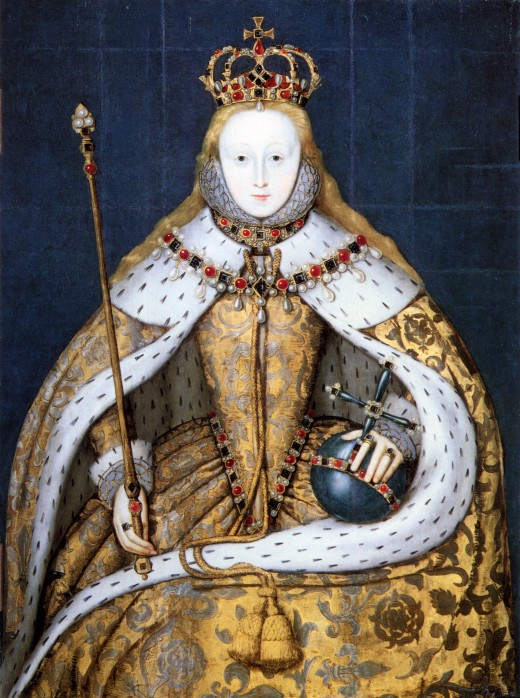
Elizabeth began every day by waking at seven in the morning and going to bed at four A.M., and made it clear that she expected her court to do the same. Unlike her father, Elizabeth was not a heavy eater, and frequently wore large, eight-layered gowns to amplify her presence since her frame was so thin (but made it difficult to pass through doors!). Elizabeth had a rigorous beauty regiment as well, brushing her teeth with soap, washing her hair in lye, wore heavy white makeup made of lead paste, poppy seeds and egg whites to hide her pox scars and eventually began wearing elaborate wigs to disguise her baldness as a result of her smallpox infection. While she lost every single tooth to her marzipan habit, she insisted on a vigorous walk every day for exercise, though one doctor claimed that she would kill herself doing so. In the end, Elizabeth outlived five or six of her royal physicians, which suited her just fine—she hated doctors.
While Elizabeth didn’t have a terrible eating habit as Henry VIII did, she did inherit her father’s violent temper. Though calm and collected at the best of times, Elizabeth could fly into a rage at so much as a bad card game, screaming and making death threat. She once ordered for the right hands to be chopped off of two authors who had written an obscene pamphlet about her, and another time stabbed one of her ladies-in-waiting with a fork. She could become so angry that she would drop into a dead faint and had to be awakened with vinegar. Her behavior could sometimes be described as bullying, but for all her occasional fearsome demeanor she was terrified of mice.
Elizabeth might have had a temper, but she was far from cruel. She loved to make people feel special. She was witty, had a bawdy sense of humor, loved to ride and hunt, delighted in dancing and watching plays written by William Shakespeare. She could be extraordinarily kind, frequently visiting her advisor William Cecil at home when he was ill and spoon-feeding him soup while he lay in bed.
When her fifth stepmother Catherine Howard was executed on charges of adultery, a horrified eight year old Elizabeth vowed never to marry. Her court was unsettled by this—who would lead England if she didn’t produce an heir? Her delegates began to pressure her to marry, and Elizabeth found the perfect solution for the dilemma: she dismissed all of her delegates and replaced them with men who could keep their mouths shut. Elizabeth did occasionally experiment with engagements to foreign royalty, only to break it off at the last minute. Marriage for her would have meant the loss of all of her power.
“I will have one mistress and no master,” she declared, and even referred to her subjects as her husbands, but she wasn’t incapable of loving; her relationship with Robert Dudley, the Duke of Leicester, had existed since childhood. They were secretly lovers, and one of Elizabeth’s first acts as queen was to install Dudley Master of the Horse and moved him into a room not far from her own in the palace, and made him a Knight of the Garter, a prestigious honor. In 1562, Elizabeth contracted smallpox, a serious disease that frequently resulted in death, and stipulated in her will that if she died then Robert Dudley would rule the kingdom with a salary of £20,000—that’s $9 million dollars in today’s money! In addition, she ordered that £500 be paid to her manservant who looked after their bedchambers. Many assume that this was meant to be hush money.
At the time, Dudley was married to another woman, Amy, who was quite ill with what may have been breast cancer. It was widely thought that when his wife died Dudley would marry Elizabeth, but his wife lived on for some time—until she died after a bad fall down a flight of stairs. Suspicious eyes were immediately turned on the queen and her knight, and Elizabeth was disturbed by the events; the death had been ruled an accident, but what if someone, one of her friends, perhaps, had shoved Dudley’s wife down the stairs in order for Elizabeth and Dudley to marry? Uneasy, and aware that the nobility was not in favor of the pairing, Elizabeth ultimately decided that it was not wise to marry Dudley, and he eventually became so frustrated with waiting that he married Lettice Knollys, a woman of Elizabeth’s court. Elizabeth was so outraged at the betrayal that banished Lettice from the court. As a result, Elizabeth never married, therefore earning herself the somewhat tongue-in-cheek title of, “the Virgin Queen.”
One of Elizabeth’s suitors had been King Philip II of Spain, her former brother-in-law. When Mary I had died Philip had lost all rights to claim kingship over England and Ireland, a loss he was not content with. Furthermore, he had wanted to turn all of England back to Catholicism, and it enraged him that Elizabeth, while never truly taking sides on the religious debate, still permitted Protestantism alongside Catholicism. To top it off, he was angered by English support of Protestant rebels in Spanish-held Netherlands, and Spanish trade ships were being picked off with infuriating regularity on the Spanish Main by Irish pirates and Elizabeth’s personal pirate, the privateer Sir Francis Drake, and Elizabeth did little to stop any of it.
Philip had first attempted to court Elizabeth, but she was not so easily impressed, telling one visiting envoy, “(better to be) a beggar-woman and single than a queen and married.” Incensed at the sub, Philip funded a plot to have Elizabeth assassinated and replaced with her cousin, Mary, Queen of Scots. In 1586, Elizabeth’s spy master Francis Walsingham discovered the plot, and Mary was arrested. Though it grieved her to do it, Elizabeth ordered the execution of her cousin by beheading four months later.
Though Mary was removed from the plot, the danger still remained; the execution of the Scottish queen forced Philip into action, and he dispatched the powerful Spanish Armada, a flotilla of 130 armed ships to attack the English coast, and his ally the Duke of Parma stood ready with his army to cross the channel with 20,000 troops to assault London.
Appointing Drake to lead England’s horribly underequipped navy, Elizabeth dressed herself in a white velvet gown and silver breastplate, riding out to meet her troops. From the back of her horse, Elizabeth shouted to her men, “My loving people, we have been persuaded by some that are careful of our safety, to take heed how we commit ourself to armed multitudes for fear of treachery; but I assure you, I do not desire to live to distrust my faithful and loving people ... I know I have the body but of a weak and feeble woman, but I have the heart and stomach of a king, and of a King of England too, and think foul scorn that Parma or Spain, or any Prince of Europe should dare to invade the borders of my realm.” Her words were met with riotous cheers from her men, and to this day her speech is considered one of the greatest speeches made in history.
Luck was on the queen’s side; a fierce storm blew up along the coast as the armada sailed nearer, the rough seas preventing the Duke of Parma and his troops from landing on England’s shores. At sea, Drake used the storm to his advantage, easily maneuvering the smaller, swifter English ships around the Spanish fleet, torching most of the larger ships and sending the rest limping home to a humiliated Philip.
Elizabeth and Dudley continued to see each other for many years, until his death in 1588 en route to Derbyshire to visit the healing baths to treat the variety of ailments he had developed over the years. Elizabeth always claimed to have never been in love, but she was devastated by Dudley’s death. Upon her death when her belongings were being removed from her chambers, a silver box was discovered containing a letter that Dudley had sent to her fifteen years earlier. It was wrapped in silk, and she had written upon it, “His last letter.”
Throughout her reign, Ireland had been a serious thorn in Elizabeth’s side. The Irish people had never and likely would never accept any English monarch as their ruler and were openly defiant of English laws and Protestant teachings. Many rebellions had broken out, and the English frequently resorted to crueler and crueler methods of bringing the angry Irish under control. This only fanned the flames of hatred more, and soon the English were treating the Irish people so badly that an estimated 30,000 died from starvation alone. Though she viewed the Irish as a being a few steps above heathens, Elizabeth still felt badly that they suffered. The notorious pirate queen Grace O’Malley had been a particularly difficult and defiant figure amongst the Irish and especially hated by many English, but when she boldly marched into Greenwich Palace on September 6, 1593 to demand the release of her sons and half-brother, Elizabeth was highly impressed and the two queens struck up a cordial friendship. At the behest of Grace O’Malley, Elizabeth issued proclamations that limited the English’s power over the Irish, released Grace’s imprisoned family, hired the O’Malleys as her own privateers, and granted Grace a hefty pension until her death.
This change in policy didn’t sit well with some of the English lords, not least among them Robert Dudley’s stepson, Robert Devereux, the earl of Essex, who held command over the English forces in Ireland at the time during the disastrous Nine Years’ War. Already cantankerous and irresponsible, Devereux abandoned his post in Ireland and was incensed when Elizabeth placed him under house arrest as a result. In 1601, Devereux tried to raise a rebellion against the queen, but few were stupid enough to join him and the rebellion was quickly crushed, Devereux arrested and sentenced to death. However, Elizabeth found no joy in the young man’s death, though she kept herself composed throughout; it is said that Elizabeth was playing the virginals (an early type of piano) when the axe came down on Devereux’s neck. When a messenger reported the execution to the queen she paused, then, without saying a word, went right back to playing.
It seems only natural that Elizabeth would have developed an interest in the New World. In 1584, she funded an expedition that sent Sir Walter Raleigh halfway across the globe, landing him on a pristine stretch of land in North America that he claimed in Elizabeth’s name, dubbing it “Virginia” in honor of the Virgin Queen.
Having entered a poor and ramshackled England an unwanted child, Elizabeth, the woman with the heart of a king died March 24, 1603, at the age of 69 after ruling for 45 years, and left it the most powerful and influential force in the world. Elizabeth I has been rated as the most successful monarch in English history.
Queen Elizabeth I works cited:
Warrior Women, by Robin Cross and Rosalind Miles
Elizabeth; The Struggle for the Throne, by David Starkey
Hell Hath No Fury, by Rosalind Miles and Robin Cross
Uppity Women of Medieval Times, by Vicki Leon
Warrior Queens, by Antonia Fraser
Elizabeth I of England http://en.wikipedia.org/wiki/Elizabeth_I_of_England
Robert Dudley http://en.wikipedia.org/wiki/Robert_Dudley,_1st_Earl_of_Leicester
Robert Devereux http://en.wikipedia.org/wiki/Robert_Devereux,_3rd_Earl_of_Essex
The Execution of the Earl of Essex http://www.historytoday.com/richard-cavendish/execution-earl-essex
The Rainbow Portrait
